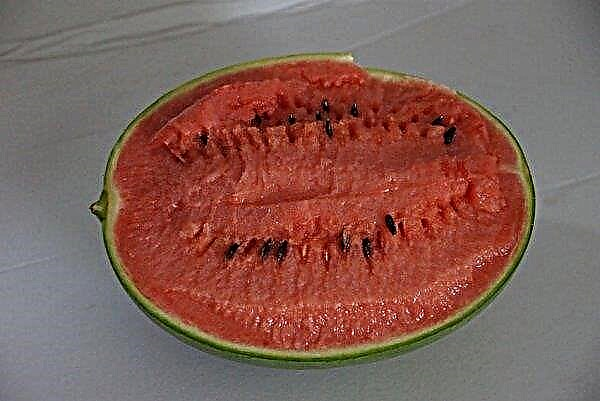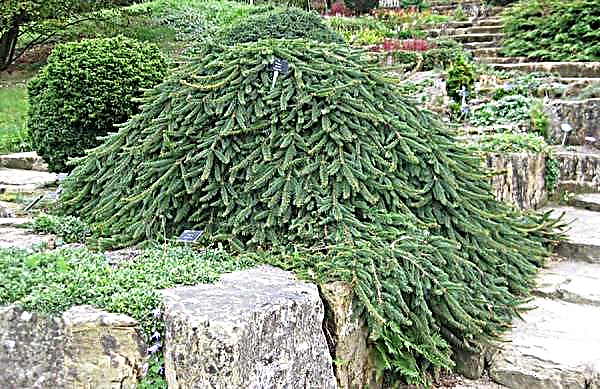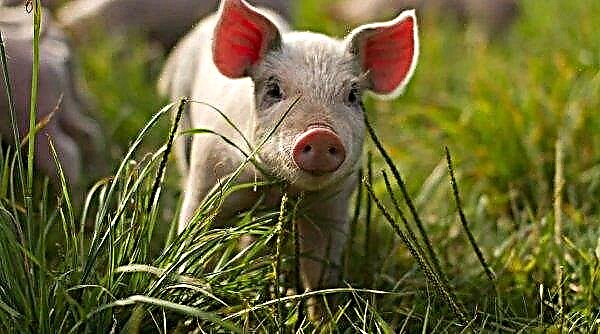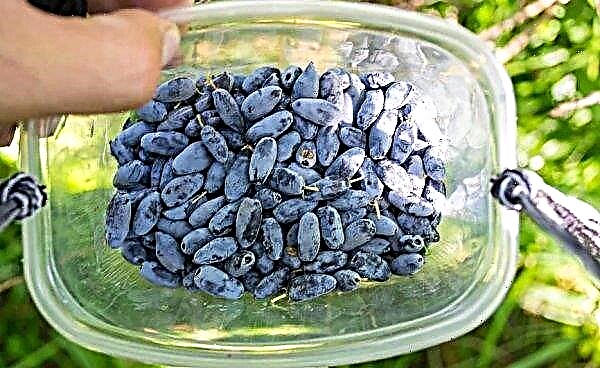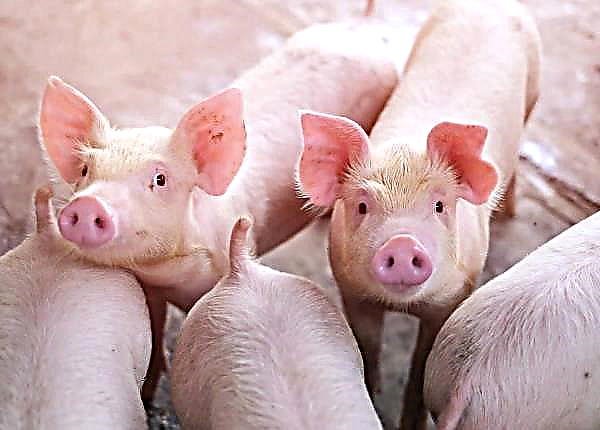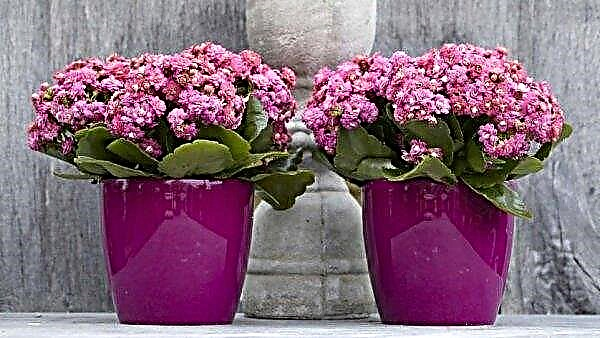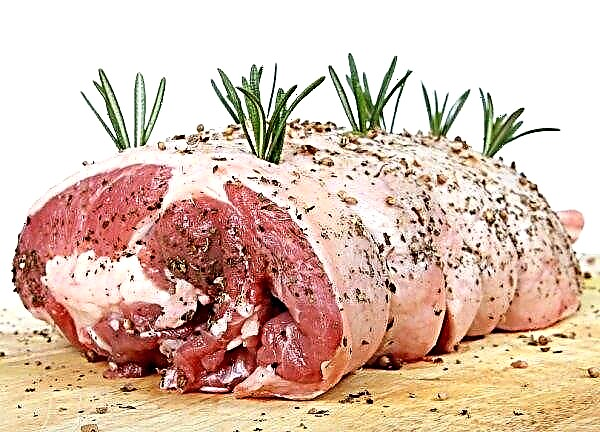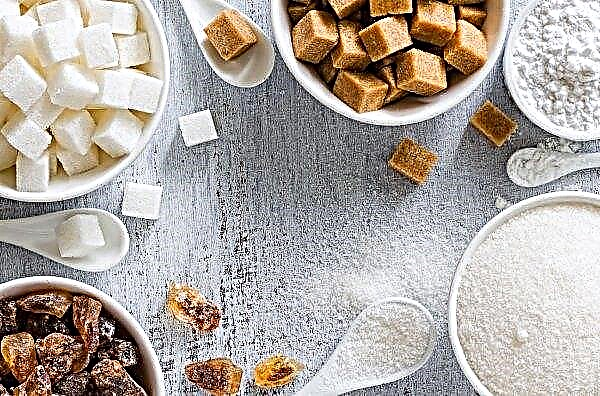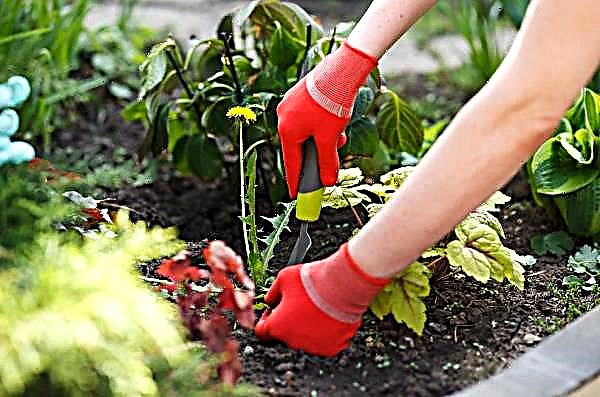Aloe is a houseplant that is often grown to produce valuable medicinal and cosmetic products. Sometimes the growing process causes some difficulties, therefore, the article will discuss the methods of planting aloe, as well as the features of flower care.
Aloe planting dates
There are no clear timelines for planting different parts of aloe without a root system - they are usually well accepted if you create suitable indoor conditions. However, some gardeners argue that the period of activation of the natural processes of sap flow, which falls in early spring, is optimal for planting a flower.
At this time, the chances of quick rooting are much higher (roots grow within 2-4 weeks), which makes it possible to obtain a strong and healthy plant as a result. If aloe cultivation will occur through seeds, sowing is best done in late February - early March.
Preparation for landing
Consider the main methods of preparing the selected material for planting. Before sowing, aloe seeds are treated with potassium permanganate to disinfect them. To prepare the solution, 0.5 l of pure water and potassium permanganate are used on the tip of the knife, the mixture is thoroughly stirred until a light pink color is obtained. Soaking lasts 20 minutes, then the seeds are washed under running water and dried.
When using different parts of the flower for planting, they are pre-treated for better rooting:
- when growing aloe from the cuttings, it is cut into pieces 10 cm long and sprinkled with slices of crushed charcoal. The treated parts are left on a napkin at room temperature for several days, so that they are well dried;
- when cutting the tops from an old plant, they keep a length of 12 cm. The slice is treated with charcoal and left to dry for a couple of days, as well as in the case of cuttings;
- growing aloe from a leaf also requires prior preparation of planting material. As a suitable material for planting, a young aloe leaf is used, its length must be at least 8 cm. It is cut off at the base and treated with powdered charcoal. Leave the sheet in a warm place so that a dense film forms on the cut - this process can take from 2 days to several weeks.
Did you know? The healing properties of aloe appear only in the 5th year of plant life.
Optimal growing conditions
Aloe, like any other houseplant, requires special conditions for normal growth and development.
First of all, you should choose a suitable place to install a flower pot, guided by the following recommendations:
- Aloe - photophilous plant when placed in full shadow, it may lose its decorative effect: its stems are very elongated. That is why it is better to install the pot on a western or eastern window. You can place the pot on the south window, but be sure to shade it from direct sunlight to avoid the appearance of brown burns.
- Air temperature indoors in summer should be at the level of +18 ... + 25 ° С, and in winter, so that the plant does not suffer from the cold - not lower than + 14 ° С.
- Air humidity indoors is not particularly important for aloe, it can be any, but it is worth noting that an artificial increase in humidity by spraying leaves from a spray can cause them to rot.

Capacity selection
Aloe can be grown in plastic or heavy ceramic pots. They must have a sufficient number of holes on the bottom so that excess fluid freely leaves the pot and the root system does not suffer from excessive moisture. The size of the tank is usually chosen according to the size of the planting.
Important! Pottery for growing aloe is usually not used, as it has the property of evaporating moisture through the walls.
The pot should be low, but wide enough. For small plants that are planted without a root system, in the hope that they will soon take their first roots, a pot of 8 cm in diameter is suitable. When the aloe is well rooted, after 1 year, it is transplanted into a larger pot, choosing the size in accordance with the volume of the root system, usually leaving 3 cm of free space on the sides.
Soil preparation
Aloe can be planted in purchased soil (for succulent plants) or made independently by mixing different components: washed river sand, clay and humus. All components are taken in equal parts, thoroughly mixed and disinfected in a double boiler for 2 hours. Thanks to this treatment, all harmful microorganisms and fungal spores can be destroyed. The soil, which is obtained as a result, retains sufficient friability and breathability.
Important! After steam treatment, the earth mixture should stand for a while, at least a week, in order for it to recover a sufficient number of beneficial microorganisms that affect the normal functioning of the plant root system.
The method of planting aloe at home
A particularly popular way of planting aloe at home is reproduction by sprouts (sprouts) without a root, allowing a large number of new flowers to be obtained from one plant.
From sheet
When the cut leaf of aloe has dried well, you can begin to plant:
- A little expanded clay is poured into the selected container (having holes at the bottom) and filled with earth mixture.
- Aloe leaf is dipped in “Cornevin” to stimulate root formation.
- A small depression is made in the soil and a prepared sheet is vertically set with a slice down so that it plunges into the pit no less than 5 cm.
- They fill the hole with soil, slightly tamping to fix the planting material.
- Moisten the surface of the soil with warm water from a spray bottle.
- Cover the container with a transparent jar to create a greenhouse effect and quick rooting.

Cuttings
After drying the slices on the cuttings, they can be planted:
- Pure wet river sand is poured into a long tank.
- Small indentations are made in the sand (2 cm deep), keeping a distance of 5 cm between them.
- Cuttings are placed in the prepared pits, dipped in the lower part of the Kornevin, and covered with sand, slightly tamped to fix the planting material in an upright position.
- The sand is kept moist while waiting for the plant to take root.
- After the beginning of the growth of the first roots, after waiting 1 week, so that they are slightly strengthened, each graft is transplanted into a separate container with a substrate for succulents. At the bottom of 7 cm (in diameter) of the pots, expanded clay is poured, soil and cuttings with roots are planted.
Video: planting aloe cuttings
Tops
Consider how to properly plant the top:
- Wet river sand is poured into a small container.
- A hole is made in the sand, 5 cm deep.
- The lower part of the planting material is dipped in “Kornevin” and installed in the hole.
- They fill the hole with sand, slightly tamping to fix the top.
- Since the flowability of sand can violate the stability of the plant, it is recommended to fix the tip with a peg, which is buried as much as possible in the sand.
- When the plant takes root, it is necessary to transplant it into a substrate, as is the case with cuttings.
Seeds
To grow aloe from seeds, you must:
- Prepare a sowing mixture for sowing: mix 1 part leaf, 1 part sod land and 0.5 part sand.
- Pour the prepared soil into a long rectangular container and make shallow (1 cm) grooves.
- Treated with potassium permanganate seeds should be sown at a distance of 3-4 cm from each other.
- Soil is poured on top of the seeds - so that all the seed material is covered with soil.
- It is recommended to cover the container with a plastic film to create optimal conditions for seed germination.
- Every day, the film must be removed for 1 hour, and when the seeds germinate - remove completely.
- When the seedlings grow enough and will be 5 cm high - it’s time to plant them in separate containers with a diameter of 6 cm, leave the soil composition the same.
- Expanded clay is laid at the bottom of the pots, a soil mixture is poured and each plant is planted in the center of the pot, then watered.
Video: planting aloe seeds
Aftercare for indoor plants
In summer, the flower actively builds up green mass, therefore, it needs regular watering. For the normal growth of aloe, it is enough to water it once a week - it will accumulate enough moisture in the leaves, which will gradually be consumed. In winter, the plant stops growing, so watering is limited by adding water to the pot once every 2-3 weeks.
Water for irrigation use a settled, room temperature. It is better to water aloe not under the root, but immersing the pot in a bath with water for 10 minutes. Also, the flower needs fertilizing, which is added every month, except for the winter period. Mineral fertilizers for succulents, which are used according to the instructions on the packaging, are well suited as top dressing.
Did you know? In Japan, aloe belongs to everyday foods, its juice is added to drinks, and plant slices are a popular filler for yoghurts.
Plant diseases and pests
Aloe does not differ in increased resistance to diseases and pests, so it often dies if you do not respond in time to the first signs of damage.
Common aloe diseases include:
- root rot which occurs with regular waterlogging of the soil, the absence of drainage or holes in the pot. In flowers affected by root rot, the roots first rot and the root system completely dies, then the ground part also dies. Therefore, as soon as you smell the characteristic putrefactive smell from the pot, it is necessary to transplant aloe with the removal of rotten roots - this manipulation will save the plant;
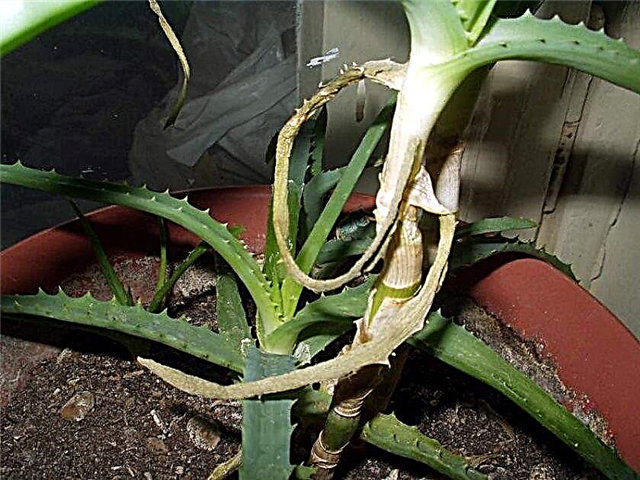
- dry rot - is an incurable disease, the plant begins to gradually dry up and no treatment methods help. The cause of the development of dry rot are parasitic fungi that affect the entire plant. In order to prevent infection of aloe, preventive treatment is carried out with any fungicidal means for succulents against dry rot, according to the instructions attached to them.

Often on the flower pests settle, such as:
- scale shield - It affects the deciduous part of the flower, manifests itself in the form of small bloats of brown color; over time, the leaves turn yellow, covered with a shiny sticky layer. You can defeat the pest by spraying aloe with Aktara according to the instructions;

- spider mite - the insect that settles on the back of the leaves looks like small brownish balls constantly in motion. In the process of reproduction of the tick and the mass population of the flower, a thin web appears abundantly on the leaves. It is possible to destroy the spider mite thanks to the drug "Actellik", used according to the instructions;

- nematodes - hit the roots; you can detect the pest during transplantation, it manifests itself in the form of large unnatural swellings. When the entire root system is completely affected, the growth of the plant completely stops and it dies. To save the flower, it is necessary to remove all the affected roots, and the remaining ones should be washed with hot (50 ° С) water, after which the flower should be transplanted into new soil.
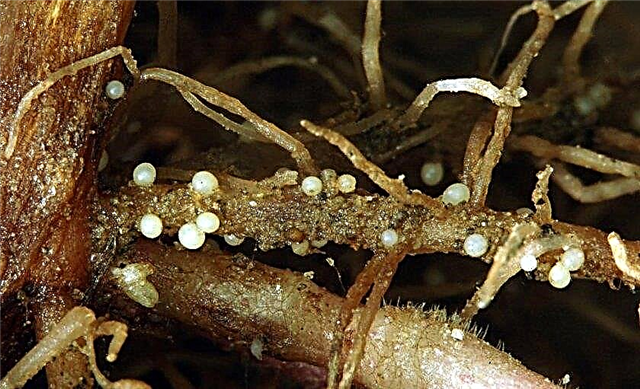
What if the plant does not take root
There are several reasons why a plant planted for rooting may not take root:
- the use of poor-quality planting material - the material is cut from a sick or weakened plant. In this case, the flower will have to be thrown away, and only healthy, strong and fleshy parts should be selected for rooting;
- use of low-quality soil mixtures - if you are not sure about the quality of the self-prepared substrate, it is better to purchase a special one (for succulent plants) and transplant aloe, such a manipulation should help quick rooting;
- improper care organization - non-compliance with recommendations for caring for an unrooted plant often leads to the death of planting material. If the plant died, you have to re-select a high-quality young leaf and plant it, observing the irrigation regularity and maintaining the required temperature in the room during the growing process.
Useful Care Tips
Consider some useful tips to help grow a strong and healthy plant:
- In winter, the flower needs additional lighting, since daylight hours are quite short. To do this, use fluorescent lamps, which are installed near the pot and turn on when it gets dark outside.
- Since aloe is a succulent, it likes to change the temperature in the room during the day and night, so at night it is recommended to ventilate the room well, to slightly lower the air temperature.
- The leaves can accumulate moisture in themselves, so nothing will happen to the flower if you forget about watering for a while, but you should not water it abundantly and regularly - it can begin to rot.
- The plant loves good air circulation, so if possible, ventilate the room more often.
- In the summer, the flower will feel better in the fresh air, therefore It is recommended to take the pot outside or open balcony.
 Thus, aloe planting and care is available even to beginner growers. If you follow the recommendations for care and providing aloe with the necessary conditions, usually no problems during the cultivation process.
Thus, aloe planting and care is available even to beginner growers. If you follow the recommendations for care and providing aloe with the necessary conditions, usually no problems during the cultivation process.






